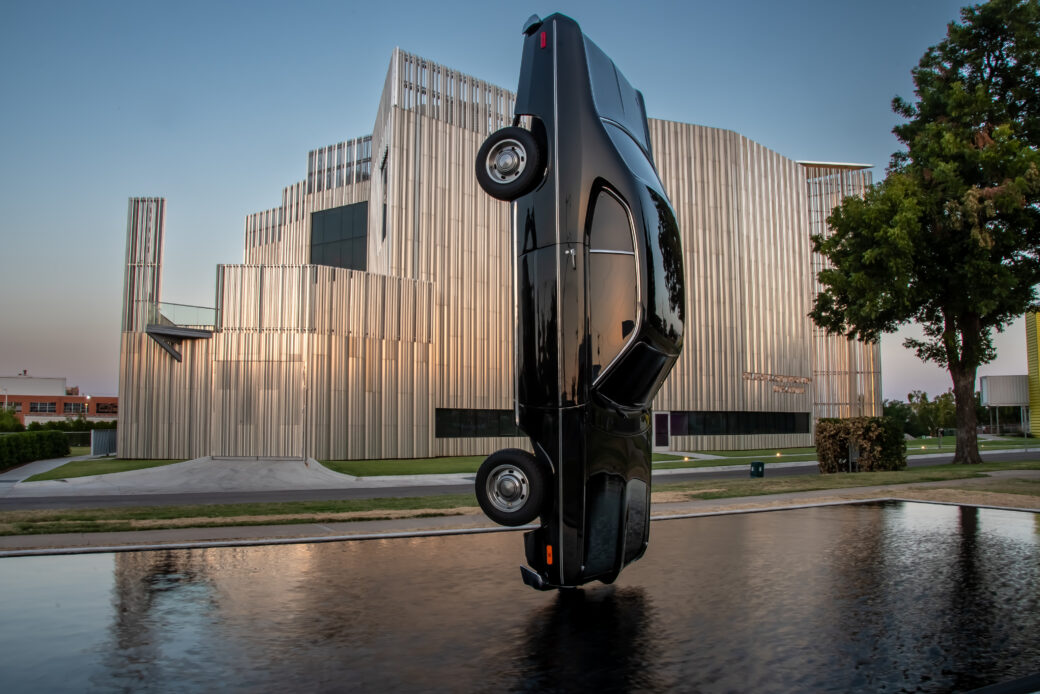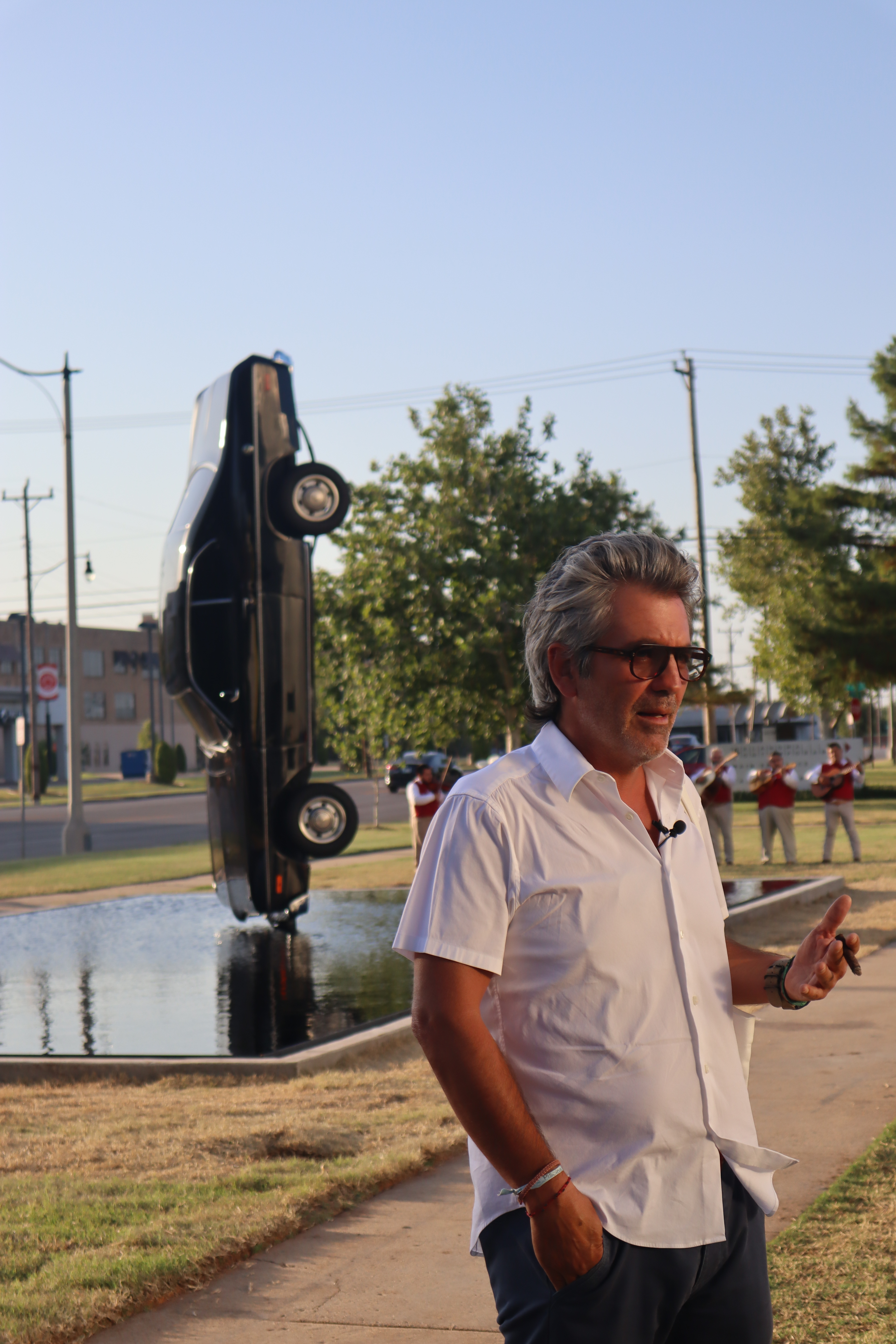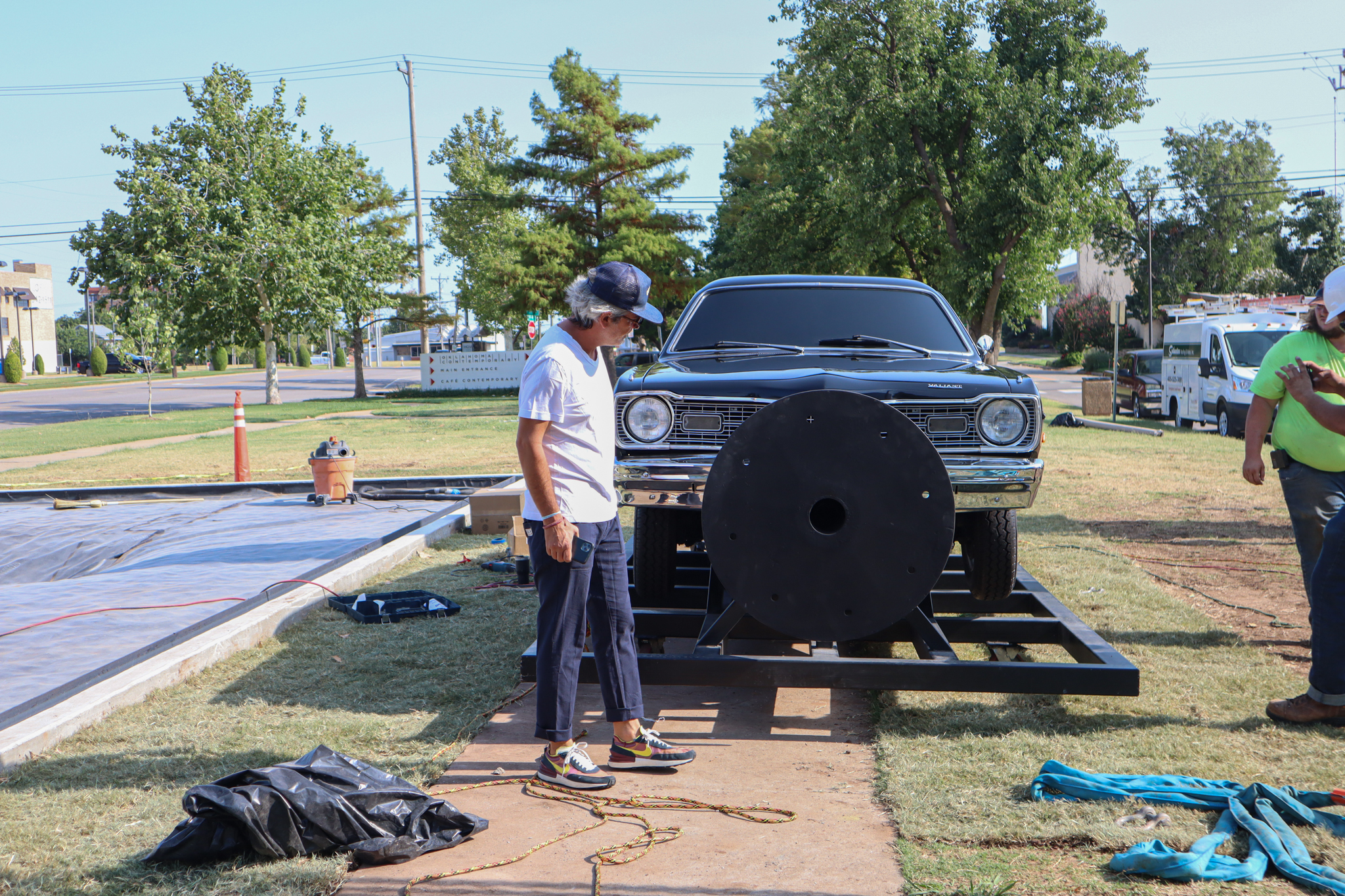
From an American icon to public art

In a modern age, how do we navigate contemporary art? La casa artist Gonzalo Lebrija connects classic and new age within his work, particularly the 2,500-pound “muscle car” suspended above a reflective pool in Campbell Art Park, a re-imagined work (spurred by an original photograph and car-dropping performance).
“[Muscle cars] were made with this sense of freeness,” Lebrija says. “But here in Oklahoma, I like this idea of this avenue being in Automobile Alley where you have all these plants where they (used to) assemble cars. But at the same time, (the plants) all disappear, and there’s only one in the corner, which is Tesla, which is electric, right? So we’re really talking about the end of an era. So to place an automobile in this shape, in this angle … it gives sense to some kind of homage to the past and where we come from.”
The Guadalajara artist has specific thoughts about the role public sculpture can play in a community — and interestingly, they’re not his thoughts. Lebrija is not interested in filling viewers’ heads with his ideas, but rather encouraging a conversation around the work itself.

“I think public sculptures have to have the responsibility to open up questions,” the artist says. “You can allow people to think about what the work is about, besides my ideas.”
Catch the full interview with the multidisciplinary artist below. As the exhibition enters its final days, we’ll unveil a few more conversations about La casa que nos inventamos, Guadalajara and cultivating creative communities. See an interview with Jorge Méndez Blake here, Isa Carrillo here, Eduardo Sarabia here, Cynthia Gutiérrez here, Claudia Cisneros here, curator Viviana Kuri here and artist talks held opening weekend here. Or visit our entire La casa que nos inventamos playlist on YouTube.
La casa leaves our Main Gallery Jan. 9 — see it while you can. Breve historia del tiempo will remain on view through March 27.
Images:
Installation view of Gonzalo Lebrija's Breve historia del tiempo / Brief history of time (2020). Photo: Ann Sherman.
Artist Gonzalo Lebrija discussing his work during opening night.
Artist Gonzalo Lebrija during install.
Gonzalo Lebrija: La casa que nos inventamos. Video: Dennis Spielman.
Return to New Light.









